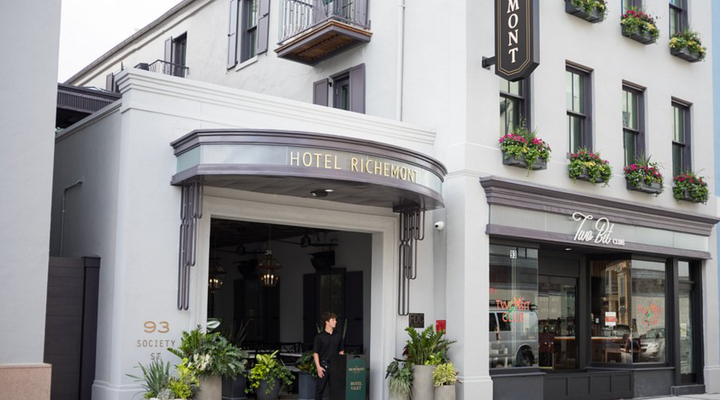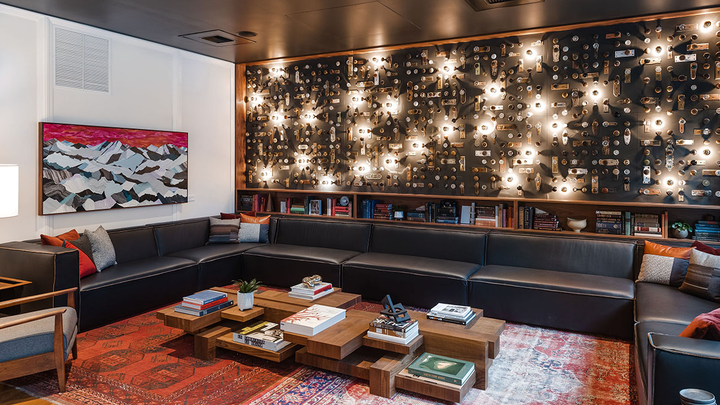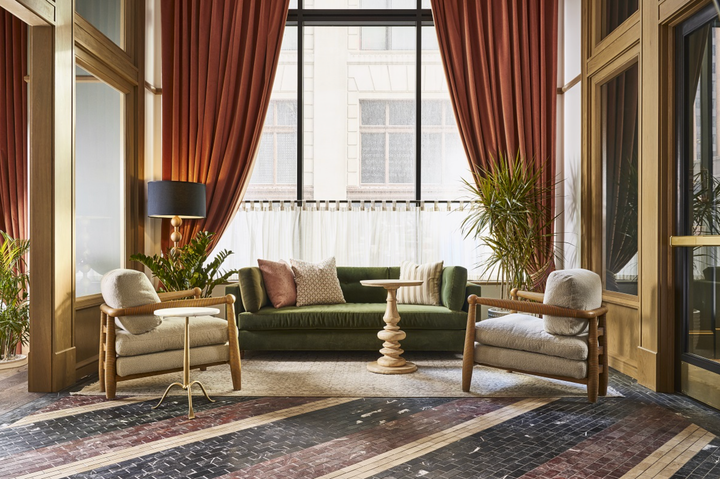Big design impact, tight budget
Plus: How your hotel website is damaging brand loyalty

Is your booking process more “oops!” than “wow!” these days? Tiny tech troubles can send potential guests packing faster than you can say “404 error.” In this issue, we show you how to keep those digital hiccups from killing your vibe, why leaning into your hotel’s historical quirks creates experiences guests can’t stop raving about and take you on a virtual stroll through a Nantucket boutique hotel that’s mixing old-school cool with a playful, retro flair. It’s all about turning clicks, quirks and character into moments your guests remember for all the right reasons.

Squeeze the day. Bali vibes, fresh-picked fruit and barefoot luxury just a quick drive from Miami? Tucked among mango trees and coral grottos, the recently announced BAYA resort will redefine the tropical escape—no passport required.
Indies are coming in hot. Big brands better brace themselves: indie hotels are stealing the spotlight with bold style and serious social media swagger. Barry Sternlicht says these savvy upstarts aren’t just playing the game, they’re rewriting the rules.
Higher learning, elevated stays. Private social clubs are having a moment, and now, hospitals and universities are joining the party. Unveiled at last week’s Boutique Hotel Investment Conference, University Hotels promises to blend campus brainpower with boutique vibes for a fresh take on hospitality-meets-community.
Gen Z doesn’t want to open a bar tab. What’s a savvy hospitality team to do? Try these three guest-friendly hacks to slash credit card fees, speed up transactions and keep your bar lines moving.
Your website’s killing the vibe. Conviva’s 2025 State of Digital Experience Report reveals that subpar digital experiences are fueling major consumer frustration and lost revenue. Even small tech hiccups like laggy pages, buggy booking forms or broken links can quickly derail bookings and damage brand loyalty.

‘Design is one of the most powerful storytelling tools’
With a refined eye and an intuitive sense of place, designer Tonya Almallah Schmitt creates environments that are as welcoming as they are visually striking. Her work blends timeless style with modern sensibility, transforming hotels into destinations and lobbies into living rooms. Here, she shares how she creates spaces that are elevated, intentional and undeniably memorable. —Jennifer Glatt
When creating visual and emotional impact through design, what makes a boutique hotel really stand out?
A boutique hotel stands out when it creates a deep emotional connection with guests and a visual identity that lingers in memory long after check-out. Critical components include a compelling story, so guests feel like characters; an immersive atmosphere, to stimulate all the senses; bold, distinctive design (Instagrammable but not trendy); intimate scale with layered spaces; local soul, reflecting the surrounding culture; and emotional resonance, evoking a feeling.
Owners want beauty that works behind the scenes too. How do you balance great design with day-to-day functionality?
Design with an operations-first mindset. Think about those smart and durable material selections, custom millwork and furniture that can do double duty—in boutique spaces, every inch must work hard and look good! Think about tech solutions that can blend in. Find beauty that works but also quietly supports daily excellence, which will allow the guests to really focus on the experience.
Tapping into place-based branding, how can design help tell a hotel’s story or connect to the local vibe?
Design is one of the most powerful storytelling tools and when it's done right, it transforms the space into a living, breathing extension of its location. It can tap into the local history and artisanship. Materials can be sourced locally or curated using local artisans and makers. Design can infuse colors drawn from the landscape or urban surroundings, embracing the quirks and contrasts of the locale and region.
Any tips for getting a big design impact on a tighter budget?
Great design on a tight budget is about being strategic, resourceful and bold where it counts. It's all about the sourcing. Some other things to think about are:
- Scale back but scale UP—Utilize fewer items, but ones that are larger in scale and more impactful.
- Mix high and low—Pair custom-looking details with cost-effective staples, like IKEA cabinets with luxe hardware or a simple sofa reupholstered in a rich textile.
- Paint, pattern and texture: A painted ceiling, a stenciled floor or a dramatic wall mural can change everything.
- Get creative with local makers, you’ll get one-of-a-kind items with a story.

Step inside the Great American summer
The Beachside is making waves on Nantucket with its retro glow-up and laid-back charm. It’s sun-soaked, style-forward and doesn't take itself too seriously.
Why it matters: In a town known for white-shingled, hydrangea-saturated tradition, this playful refresh brings personality without sacrificing polish. The design nods to the ’60s but skips the kitsch, landing squarely in “effortlessly cool” territory. It’s a sign that Nantucket’s hotel scene isn’t afraid to loosen its (seersucker) collar a bit. (Condé Nast Traveler)

It was a jungle in there
SoCal's Granger Hotel transforms 1900s grandeur into a modern guest adventure, where every stay comes with a side of local lore. The five-story Romanesque-style landmark in San Diego's Gaslamp Quarter was originally a bank, and its basement served as a temporary residence for animals before the 1916 opening of the San Diego Zoo.
Why it matters: Unique historical features let hoteliers create immersive experiences that guests can’t find anywhere else—in this case, think tin ceilings, high arching windows, grand hallways and tales from a bygone era. When you make history part of the hospitality, you transform your building’s story into some of your biggest selling points. (Tablet Hotels)

Cash for charm
Investors are rolling out the red carpet for boutique hotels, pouring capital into independent properties that promise big returns and even bigger guest appeal. In fact, indies are proving to be the hottest ticket in the hospitality investment game.
Why it matters: “Independent hotels are experiencing a liquidity boom, outpacing their branded counterparts in the post-pandemic era,” says Jillian Mariutti, senior director at JLL Capital Markets. “Their adaptability has caught the eye of capital markets, making them increasingly attractive investment targets.” (BLLA)

Automation vs. attention
With labor costs rising and staffing shortages persisting, the real magic happens when staff and technology team up, giving guests the speed and convenience they crave and operators the efficiency (and rave reviews) they need to thrive.
Why it matters: Tech may not be the sole solution to the guest experience dilemma. Streamlining operations by integrating technology and thoughtfully redistributing staff can strike the perfect balance—delivering smoother workflows, boosting team morale and creating a guest experience that feels juuuuuust right. (Hospitality Investor)
Thanks for reading today's edition! You can reach the newsletter team at newsletter@mintpillow.co. We enjoy hearing from you.
Interested in advertising? Email us at newslettersales@mvfglobal.com
Mint Pillow is curated and written by Jennifer Glatt and edited by Lesley McKenzie.




